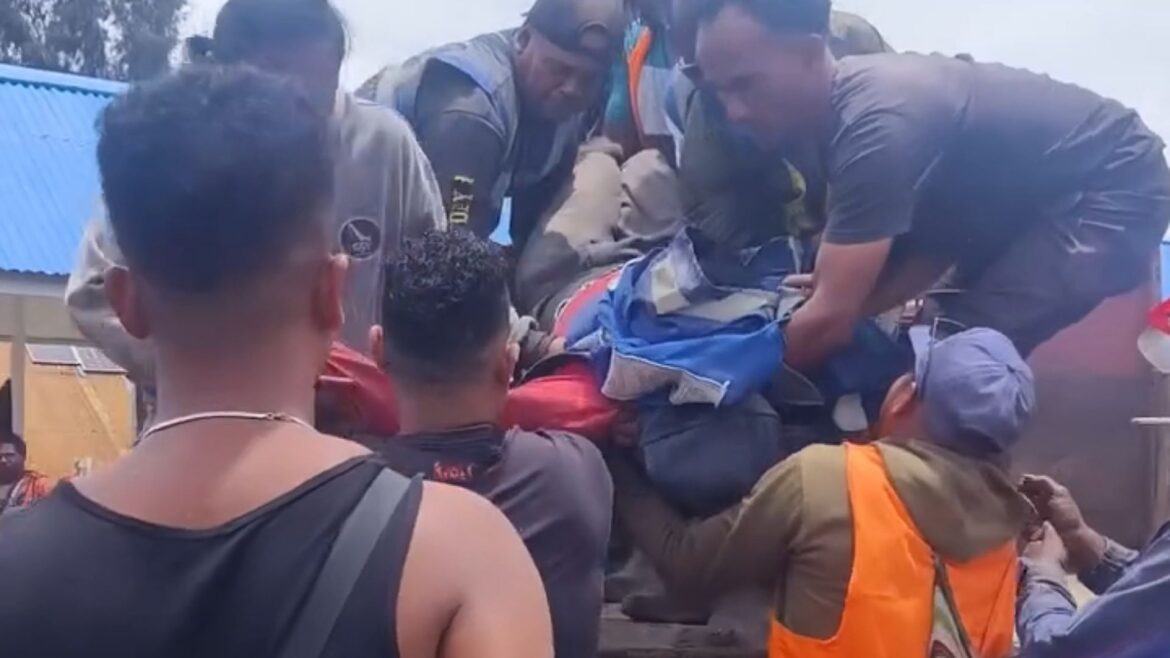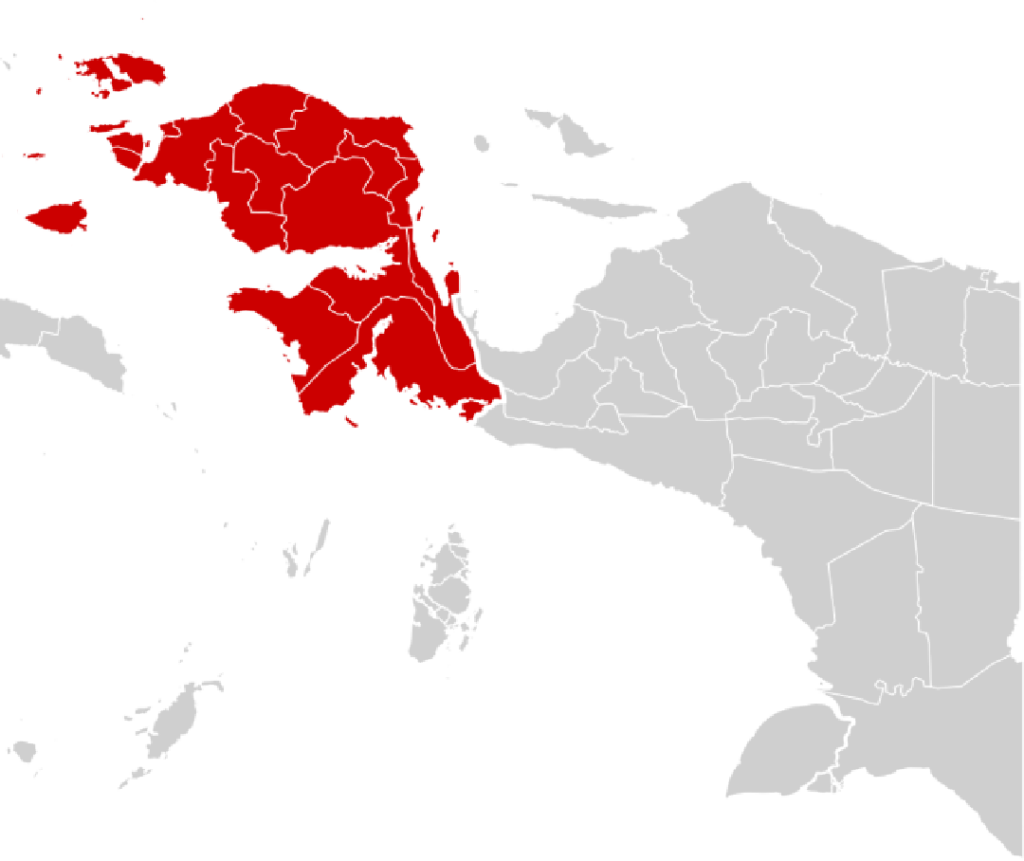At around 10:20 a.m. local time on October 8, 2025, an ordinary workday on a remote mountain road became a scene of fatal violence. Anselmus Arfin, a 25‑year‑old worker with PT. TJP, was measuring terrain in a dense stretch between Village Ndugusiga and Bambu Kuning when a single shot rang out. The bullet pierced his left chest and exited through his back. He fell, bleeding. Colleagues rushed him to Regional Public Hospital (RSUD) Sugapa, but his life could not be saved. This wasn’t the collateral damage of a skirmish. It was a deliberate ambush of a man building roads.
The killing of Anselmus is more than a tragedy. It is a symbolic act against development itself—a message that to some, change is not just unwanted but must be stopped by any means. In Papua, where infrastructure is a lifeline, such violence threatens not just roads but trust, growth, and the state’s promise to its citizens.
Morning Mapping, Sudden Violence
That morning, Anselmus and four colleagues sat on a tractor as they marked out the path for a new road. Their tools were simple—measuring tapes, leveling devices—but their stakes were high. Government planners see roads as arteries of development: connection, access, and inclusion.
At 10:20 a.m., from the left side of the road, a lone shot rang out. The workers froze. The rifleman, probably concealed, struck Anselmus in the chest. He collapsed. His teammates jumped out, rushed to his side, and tried to evacuate him. Amid panic, blood, and urgency, they ferried him by vehicle to Sugapa Hospital. But he died en route.
By midday, news spread. The police arrived; TNI (military) units mobilized. The Damai Cartenz Task Force, a joint security command targeting armed groups, launched pursuit. Some personnel advanced along suspected trails; others guarded the hospital and coordinated with the project company.
Brigadier General Faizal Ramadhani, head of operations for Satgas Damai Cartenz, condemned the act. He said Armed Criminal Group’s (KKB) violence “not only kills civilians building their own regions but also impedes acceleration of development in Papua.” He vowed the state would not retreat in confronting insecurity in the province.
Local police in Intan Jaya, led by Kompol Sofian Samakori, confirmed the identity of the victim and described the scene: the shot came from the side, the workers were measuring when struck, and the perpetrator remains at large. The victim’s body was scheduled for transport to Timika for burial.
A Pattern of Targeting Development
This killing is not novel in Papua’s conflict. Over the years, there has been a recurring pattern: road workers, utility technicians, teachers, and contractors targeted in remote districts. These are not combatants but people implementing public works. The message is clear—in some zones, development is deemed hostility action.
By attacking someone mapping a road, the perpetrators disrupt long-term projects, scare off contractors, and send fear deep into remote communities. They make the terrain itself feel dangerous. Roads, in places like Intan Jaya, are not mere infrastructure. They represent access to health, schooling, markets, and governance. Blow up a road, and you sever hopes.
Brigjen Faizal’s words captured this calculus: opposition to infrastructure is opposition to progress. The act was not random violence; it was strategic.
Indeed, the suspected leadership of this strike—Daniel Aibon Kogoya—is known for operations in Intan Jaya. The attack aligns with past incidents where KKB (West Papua National Liberation Army – Papua Liberation Organization, or TPNPB – OPM) actors have threatened, burned, or shot at workers, especially near contested zones or actual infrastructure projects.
The Human Cost Beyond Headlines
Anselmus was a young Papuan, doing work to bring roads closer to isolated villages. His death ripples far beyond his family. For his colleagues, the trauma of violence intrudes into work that is already dangerous. For contractors, increased risk means higher costs, security protocols, and reluctance to deploy staff far from base.
Villagers in hinterland areas, whose lives depend on road access, may see delays, cancellations, or project filtering—the most remote zones may be abandoned first. Over time, that deepens isolation and inequality, reinforcing perceptions that they are left behind.
Local leaders may be intimidated, mediators ignored, and trust eroded. The state’s commitment to development becomes harder to manifest in places where bullets await.
State Response and the Risk Calculus
The government’s counter is twofold: security and development commitment. It must protect workers and maintain project momentum. But it also must avoid alienating local communities, lest militarized approaches be framed as occupation.
Security action has already taken shape. Satgas Damai Cartenz has intensified patrols, placed forces at key vulnerable points, and begun investigations to trace the network behind the kill. Some units pursue along forest trails and cross-check intelligence—though terrain and remoteness make rapid response difficult.
But security alone may not suffice. The next step must be integrating community-based intelligence, empowering local leaders to mediate tensions, and opening communication with villagers to reject violence as policy. Ensuring that infrastructure work has local participation and visibility can reduce the perception that these projects are external impositions.
Moreover, building momentum in safer zones first may help create a sense of progress that bolsters legitimacy. Seeing roads built in one district can encourage trust in neighbors that development is genuine, not a trap.
Finally, the government must accompany security with justice and accountability: capture of culprits, transparent legal process, and restitution for the family. Without that, every project will operate under the shadow of impunity.
Development Under Fire: What This Signals for Papua
The killing illustrates that progress in Papua is fragile and contested. It suggests that some armed factions do not merely want autonomy—they want to preserve the status quo of isolation. Development threatens the power vacuum they exploit; roads erode their grip and support the separatist agenda in Papua.
If infrastructure is stymied, Papua risks its worst fate: stagnation. While national and provincial governments make ambitious plans, building Trans‑Papua roads, fiber optic links, and outpost clinics, all of this hinges on safe passage. Each attack sets the project timeline back by months, even years.
It also signals that development in Papua cannot be mere technical work—it must incorporate conflict sensitivity and political risk. Projects need protective strategies built in from the start: community buy-in, security protocols, stakes for locals, and adaptive management to pause and adjust as needed.
Looking Forward: Resilience, Resistance, and Reclaiming the Narrative
Anselmus’s death must not become another footnote. In memory of him, the state, media, and civil society must seize the narrative: that violence against infrastructure is violence against opportunity.
First, the project in Intan Jaya must resume under protected status, with guards, escorts, and local watchers. Let no zone be declared “too dangerous” so that inaction becomes the default.
Second, local voices must be amplified: traditional chiefs, church leaders, and educated youth in villages must weigh in that they reject such killings. The more the community rejects this as extremist violence, the weaker its legitimacy.
Third, the government should consider compensations and protections for workers and families in remote districts—hazard pay, medical security, and faster legal follow-up.
Fourth, national media, NGOs, and international observers must spotlight such attacks. Papua must not be hidden behind walls of poor connectivity and low visibility.
Conclusion
The gunshot that killed Anselmus Arfin was not just a lethal bullet; it was a signal—loud and clear—that for some armed actors, Papua’s progress is an affront. In targeting those building roads, they aim to stunt development and assert control over what spaces change can penetrate.
The state and its allies face a stark test: Do they retreat from contested zones, allowing enclaves of stagnation? Or do they double down—securing projects, protecting people, and advancing infrastructure, even amid threats?
To bring roads, connectivity, and hope to Papua, violence must be answered not merely by force, but by relentless political will, community inclusion, and institutional resilience. Otherwise, every kilometer left unbuilt is a mile ceded to fear—and in Papua, that defeat is too costly to bear.


